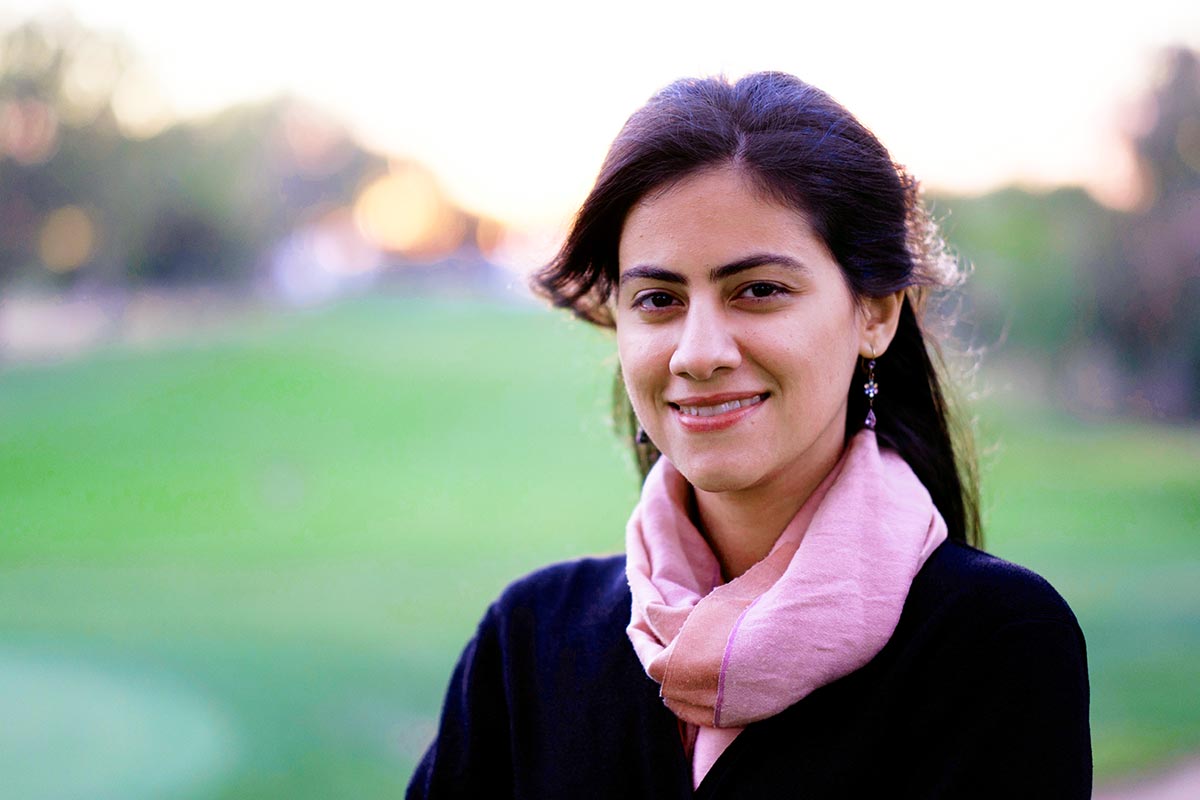COURSE INSTRUCTOR
Soha Ashrafi

Soha Ashrafi is thrilled to be a part of The Brain course. Soha received her Ph.D. in Neuroscience from Weill Medical College of Cornell University. She brings her background in neuroscience, development, and genetics to the Museum’s education department.
Soha was born in Iran and emigrated to France at the age of 2. Her family then moved to the United States where Soha completed her primary and secondary schooling. It was as a high school student that Soha first came across her sister’s college neuroscience textbook and was fascinated by the idea that the mind, responsible for our thoughts and creativity, could be studied in the laboratory. Soha completed a Bachelors of Science degree in Neurobiology and Physiology from the University of Maryland, College Park.
Soha then worked at the National Institutes of Health (NIH) for 2 years studying the plasticity of the adult monkey brain. Plasticity describes the ability of our brain to change structurally as a result of experience, such as learning and memory. She trained monkeys to perform classical memory tasks, and analyzed the effect of the execution of these tasks on cortical plasticity. Soha realized the power of scientific research first-hand during these formative years at the NIH--from the formulation of a hypothesis, to designing experiments, reading existing literature, all the way to performing experiments and analyzing the results. It was here that Soha first experienced the joy and excitement of discovery...and she was hooked!
She enrolled in the doctoral program at the Weill Medical College of Cornell University in 2008. For her thesis work, Soha studied how the exquisite connectivity patterns of the adult nervous system arise during development. Neurons communicate to each other via synapses, the connections between neurons where chemical signals are exchanged. The correct propagation of neural signals depends on the appropriate synaptic partnership between the billions of neurons within the nervous system and with other tissues in our body (i.e. heart and skin). Soha was fascinated by the question of how neurons select their synaptic partners with such precision, given the vast numbers of possible targets. Using the mouse as a model, Soha found that two classes of neurons in the spinal cord, known for decades to be synaptic partners, utilize a protein code that promotes their stringent connectivity. Soha and colleagues identified and proved using genetic methods that these proteins are required for the formation of this class of synapse. These findings shed light on one example of how synaptic specificity is achieved in the developing nervous system.
Having studied the formation of neural circuits for her Ph.D. thesis, Soha decided to switch fields and study a critical function of neural circuits. Soha moved to New York University to study sleep behavior in Drosophila Melanogaster, the common fruit fly (yes, flies sleep too!). Flies are highly advantageous to study not only because they exhibit common features with mammalian sleep, but also because they are one of the most genetically tractable organisms. This feature facilitates studies aimed at identifying molecular signals in the brain that regulate sleep behavior. Moving from monkeys, mice, and now flies, Soha has learned about the power of diverse model organisms in gaining important insights about the brain, from its development to the execution of behavior.
Soha has taught and tutored incoming graduate students in the fields of neuroscience and molecular biology as a graduate student. She has also participated in outreach and education programs throughout New York City. It was through these activities that Soha's passion for teaching was first sparked. As a frequent visitor to the Museum, Soha is very excited to participate in its education program, and hopes to share her love of the brain with students and colleagues.